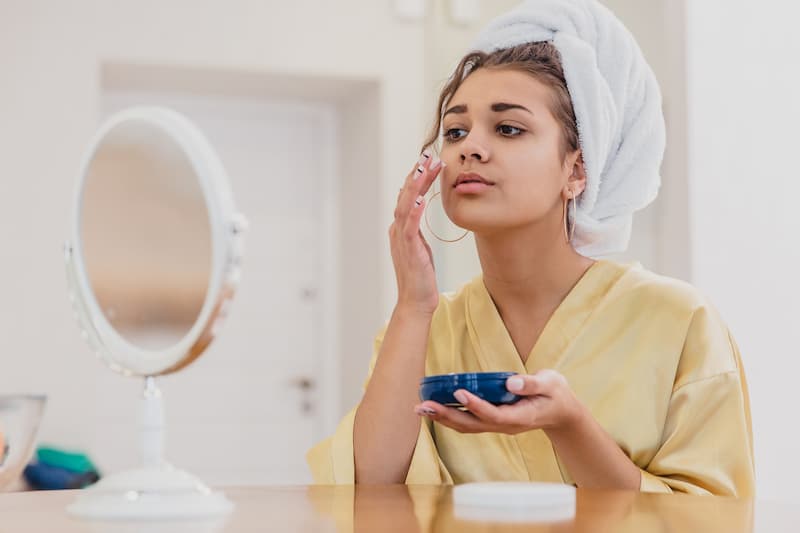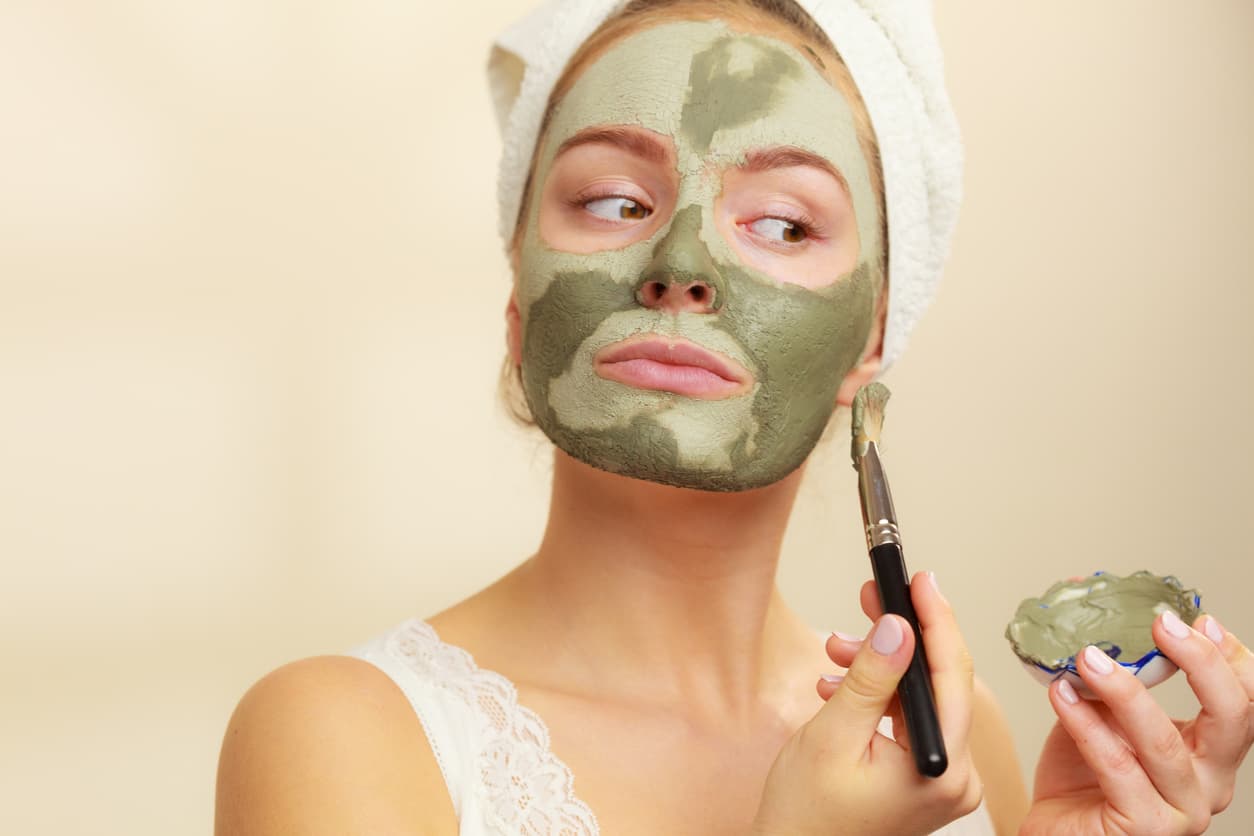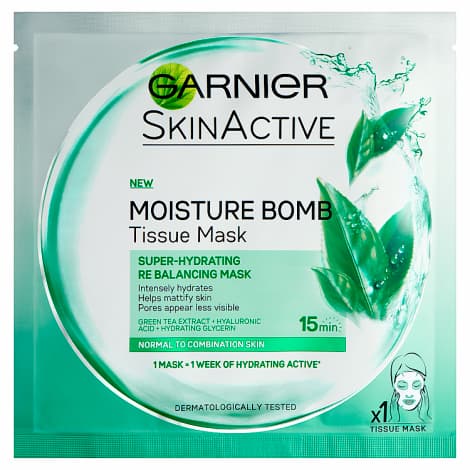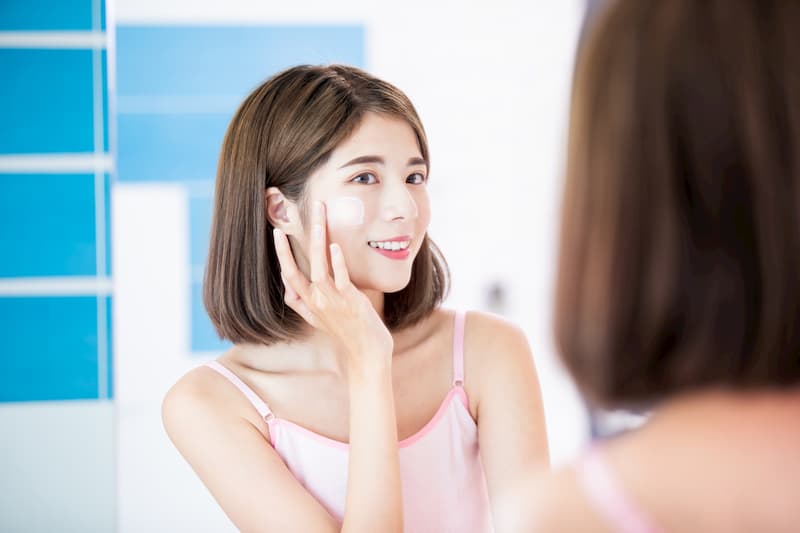
- Brightens & evens complexion
- Enriched with vitamin C
- Dry algae tissue mask
- Replumps the skin with moisture
Price: €5.95
Do you suffer from dry skin? Read our guide to the best face masks for dry skin
Face masks can be effective and help certain skin conditions/different skin types. Using face masks alongside a regular skincare routine can help maintain healthy skin. Face masks can address specific skin concerns, such as dehydrated skin, clogged pores or oily skin and impurities. However, for maximum results, it is crucial to apply them correctly. This section will include guidance on applying different types of face masks correctly.
Click on a link to jump to that section:
Applying face masks correctly is important to get the most out of a product and the best results. Leaving a face mask on for too long can sometimes strip all the oil from your skin and dry skin out, causing skin irritation. Leaving it on for less time than required can make it ineffective. Knowing how to apply a face mask hygienically and evenly is also important, so you avoid spreading dirt to the face and achieve maximum results.
Face masks should be used after cleansing, on a clean face. This is vital, as it ensures you’re not applying a face mask over bacteria and dirt. If you are using an overnight mask, these should be used as the last product in your skincare routine.

How you apply a face mask varies, depending on the type of face mask you use and whether you choose to apply it with a brush or bare hand. However, certain steps are relevant to all types of face masks, which are the following:
Applying face masks can sometimes be messy. Using a clean brush can be a good solution for a neater application. A brush can also make it easier to control how much product you are putting on the face. Before applying, you should always ensure the application brush is clean to avoid spreading dirt onto the face. Gently apply the face mask to the face using downwards strokes until the coverage is even.

You should use a clean brush that is flat and small enough to allow for precise, even coverage. Old or damaged brushes are likely to create less neat coverage.
Applying a face mask without a brush can be less hygienic; however, there are things you can do to ensure you do it correctly. Firstly, never apply a mask with dirty hands. Applying a face mask on a dirty face or using dirty hands is pointless. Next, gently apply the face mask with your hands, ensuring it is spread evenly across the face. Many face masks will only require a light layer, as it is often the case that a small amount goes a long way. Applying too much of a face mask can sometimes result in dry skin. Applying a face mask in front of a mirror is advised, so that you can pay attention to the coverage.
Gel masks are often infused with collagen and antioxidants, so they're perfect for intensive skin recovery. When using a gel mask, spread an even amount over your face using your fingertips or a brush. Avoid getting gel masks in your eyes or on your lips.
Recommended Product:

Price: €5.95
Do you suffer from dry skin? Read our guide to the best face masks for dry skin
A peel-off face mask is a great solution for clogged pores and dead skin. Peel-off masks nourish and moisturise the skin, as well as exfoliating, removing dead skin and blackheads. In front of a mirror, gently apply the face mask evenly, using a brush or your hands. Leave on the skin for at least fifteen to twenty minutes.
Do you suffer from clogged pores? Read our guide to the best face masks for minimising pores.
Firstly, remove the sheet mask from its packaging and unfold it without tearing. Line up the mask with your face shape, eyes, nose, and mouth. Next, gently press the mask to the form of your face until it’s sticking evenly. Ensure you leave it on the approximate length of time stated, which is likely to be anywhere from five to twenty minutes.
Recommended Product:

Price: €4.50
A black face mask such as a charcoal, clay or mud mask is ideal for getting rid of dirt and toxins on the skin, helping to treat blackheads. After cleansing, dip your fingertips into the mask, scooping out a quarter-sized amount. Spread the charcoal mask evenly across your face, starting at your upper neck and working your way up to your face. Avoid your lips and eyes.
Recommended Product:

Price: €18.00
Sleeping masks work as a barrier and a sealant, trapping in moisture throughout the night. The beneficial ingredients help to keep the skin hydrated. You should apply an overnight mask after completing your normal skincare routine, on a clean face. Smooth the overnight mask in a thin layer over your face as you would with a normal moisturising cream. Avoid your eyes and lips.
If you are using a deep cleansing mask such as those made from charcoal, you can achieve a better cleansing experience by using the mask after a shower. Showering before you apply a face mask allows your pores to open up from the warm water and steam, which also prepares your skin for a deeper cleansing experience.
With other types of masks such as a moisturising or hydrating mask, incorporating face masks into your shower routine can be timesaving. If you have drier skin, you may benefit more from applying your mask before taking a shower. This helps to seal in the moisture from your mask and the shower. However, you are unable to see if you have evenly applied the mask in the shower, which can sometimes impact the results.
It is generally not advised to use a face mask every day; however, most hydrating versions can be used daily. Products with exfoliating, detoxifying or anti-ageing properties should be used more sparingly.
This depends on the type of face mask. Most face masks can be used up to three times a week. However, you should always read the instructions to ensure you don’t use it too often.
Experts advise always using a moisturiser or moisturising serum after a face mask. By creating a physical barrier on the skin, facial moisturizer helps prevent water loss and seals in active ingredients. This allows you to see better results and keep the effects of the face mask for longer.
You can shop our range of moisturisers here.

Cleansing the skin is a vital stage of applying a facial mask, as it prepares the skin by ensuring it is clean and free from excess dirt.
Before using any face mask, you should always ensure it is the right one for your skin concern or skin type. You can read our guide to choosing the right face mask for your skin type or concern here.
Even if you think your hands are clean, you should always wash them before applying a face mask. We can have dirt and bacteria on our hands without knowing it, so you should try and prevent spreading it to your face.
Often with face masks, a moderate amount is more effective than applying it heavily. Heavy application can be too much for the skin and can cause side effects such as drying.
Moisturising after is important, particularly if you have used a cleansing or exfoliating mask. Face masks can often dry out the skin a little bit to unclog pores, so moisturising keeps the skin hydrated.
Instead of using a face mask before an event or special occasion, try and implement them into your skincare routine. Experts recommend using face masks up to three times a week, depending on the mask.
Related content: Choosing face masks for different types of skin